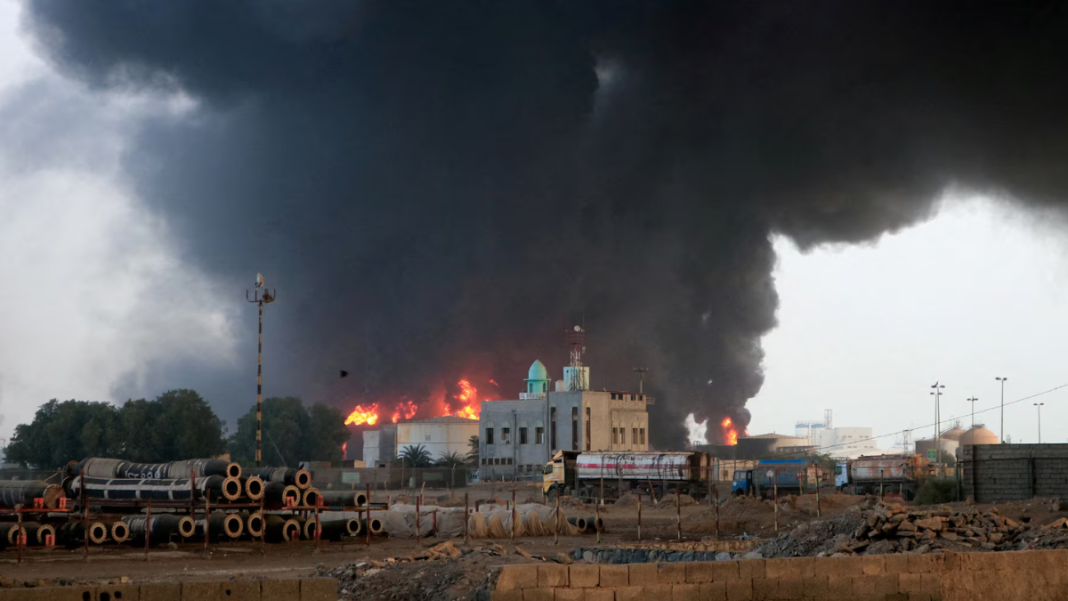On September 10 and 11, 2025, a major conflict unfolded between Israel and Yemen’s Houthi rebels. It began with a deadly Israeli airstrike in Yemen’s capital, followed by a Houthi missile attack on Israel. This clash is part of a larger fight tied to the war in Gaza.
IDF Launches Major Airstrike on Yemen’s Capital
On September 10, 2025, Israel’s military, called the Israeli Defense Forces (IDF), bombed Sanaa, the capital of Yemen. Over 10 fighter jets, likely F-15s or F-35s, flew from Israel to Yemen with help from refueling planes. They dropped about 30 bombs and missiles on Houthi-controlled sites. These included military camps in Sanaa and Al Jawf, a northern area, as well as a Houthi media building used to spread messages. Fuel storage sites, which the IDF said supported Houthi attacks, were also hit.
Houthi officials reported 35 people killed and many injured, mostly in Sanaa. Videos shared online showed smoke over the city and damaged buildings. The IDF said the strikes were precise to stop Houthi attacks on Israel. This was part of “Operation Ringing Bells,” a campaign against the Houthis. Israel’s leaders, including Prime Minister Benjamin Netanyahu, watched the mission from Tel Aviv. The jets returned safely after a few hours.
Qatar seeks guarantees as Trump disowns Israeli strikes and vows to prevent repeat
Houthi Rebels Fire Missile in Revenge
The Houthi rebels, who control much of Yemen with Iran’s support, struck back fast. On September 11, 2025, they launched a ballistic missile at southern Israel. Houthi spokesperson Yahya Sarea said it targeted key military sites as revenge for the Sanaa airstrike. The missile, possibly a Burkan or Quds model, could travel over 1,000 kilometers. It was fired from Houthi areas in Yemen, likely Saada province.
The Houthis have attacked Israel before, sending over 400 missiles and drones since 2023 to support Gaza. Videos from Yemen showed the missile launch with smoke trails in the sky. Houthi supporters cheered as it took off. The attack came early on September 11, raising tensions just hours after Israel’s strikes.
Command Chain Hit—Missiles Launched: Houthis strike back at Israel within hours
Israel Intercepts Missile Over Negev Desert
Israel’s air defense systems stopped the Houthi missile before it could hit. The interception happened over the Negev Desert, a dry area in southern Israel. Systems like Arrow-3, built to catch ballistic missiles, destroyed it high in the sky. Sirens sounded in cities like Eilat and Beersheba, sending people to shelters. The interception caused loud sonic booms and scattered debris, but no one was hurt, and no buildings were damaged.
The IDF confirmed the missile was stopped and shared updates online. Videos showed flashes in the sky from the interception. People in southern Israel felt scared as sirens blared, with families hiding in safe rooms. The missile crossed the Red Sea, tracked by IDF radars. Posts on X showed real-time reactions, like siren sounds and smoke pictures, with some viewed over 450 times.
This clash ties to broader issues, including Houthi attacks on Red Sea ships, which affect global trade. The U.S. supports Israel’s defense and has hit Houthi targets before, but this was an Israeli-led operation. News outlets like BBC and Reuters reported similar details. Houthi media called the 35 deaths “martyrs” and showed protests in Sanaa with crowds burning Israeli flags. These events, over two days, show the intense fight between Israel and the Houthis.

